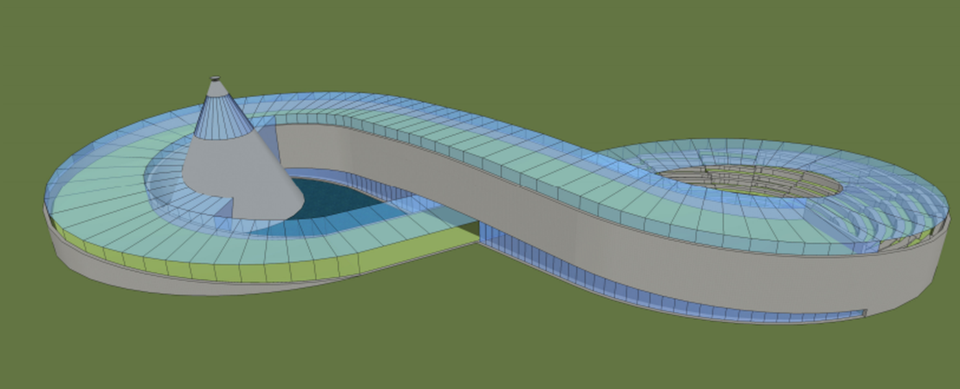The planned McMurray Metis cultural centre at MacDonald Island Park will include a rooftop greenhouse garden, offering a solution to Indigenous food poverty in the Wood Buffalo area while preserving Métis culture.
Vancouver-based architects Genevieve Noel and Maginnis Cocivera of Mindful Architecture said the greenhouse is inspired by Métis farming and gardening.
As many Indigenous communities struggle with access to fresh food, including in the Wood Buffalo area, the greenhouse is being treated as an example of Indigenous food sovereignty and a way to promote culture.
“We’re trying to embrace the culture at its deepest level and are trying to reintegrare it onto MacDonald Island,” said Noel.
The greenhouse will grow fresh fruits and vegetables for nine months out of the year. Noel says the goal is to produce "high-quality, healthy vegetables at a lower cost" than what is offered in Fort McMurray.
Once the greenhouse is set up, McMurray Métis could hire someone to run the nursery, fresh produce could be delivered to elders, and other members could pay to have a basket of fresh fruit and vegetables delivered weekly during growing season.
“There’s many ways it could provide for the community,” said Noel.
The plants will not be restricted to the greenhouse; McMurray Métis members will also be able to take traditional medicines and plants home for their own gardens.
“McMurray Métis have a well-developed program for reclamation which they’ve used in a lot of the former oilsands sites,” said Cocivera. “It involves the replanting of specific plants and elders being involved to guide the process. We wanted to tap into that existing process they already used in order to re-wild the site.”
Traditional knowledge passed down in the kitchen
The project is an expansion of the community garden at McMurray Métis' head office near Gregoire. That garden already provides food for elders while teaching food traditions to members and the community.
“Right now, we bring schools up here and we try to transfer knowledge of who the Métis were and the life they had,” said Bill Loutitt, CEO of McMurray Métis. “It’s just going to be so much easier when we have the structure that speaks to it.”
The cultural centre will also include a commissary kitchen where members can learn traditional cooking and food preparation using what was grown in the greenhouse.
For Melanie Walsh, a member of McMurray Métis who also does communications for the Local, one of the best places where traditional knowledge is passed down is the kitchen.
“That is where I spend the most time with elders, especially my grandma,” she said. “So for nine months we’ll be growing berries and then for those three months, we’ll be very busy making jam.”
Noel, who is Métis, said working on the cultural centre project has made her feel closer to her own heritage.
“It’s been really eye-opening for me to reconnect and look at the principles, teachings, and wisdom of Métis culture,” she said. “It’s like a homecoming and I feel really honoured.”
In June, council approved selling 7.8 acres of land so the Local could build the centre.
Once open, other features will include an art gallery, museum, smudging rooms, youth spaces, conference spaces and offices for child and family services, health care and employment training.
Loutitt also mentioned the Métis Nation of Alberta is working on self-governing agreements with the federal government. He hopes the cutlural centre can be a place where those day-to-day operations can operate.
“Culture is basically what defines us as Métis. For years, we had to hide our heritage,” said Loutitt.
“Now youth have an opportunity to be a little bit more proud," he said. "It’s a big circle that’s been kind of broken for us for a long time and I see it being repaired through the cultural centre.”




